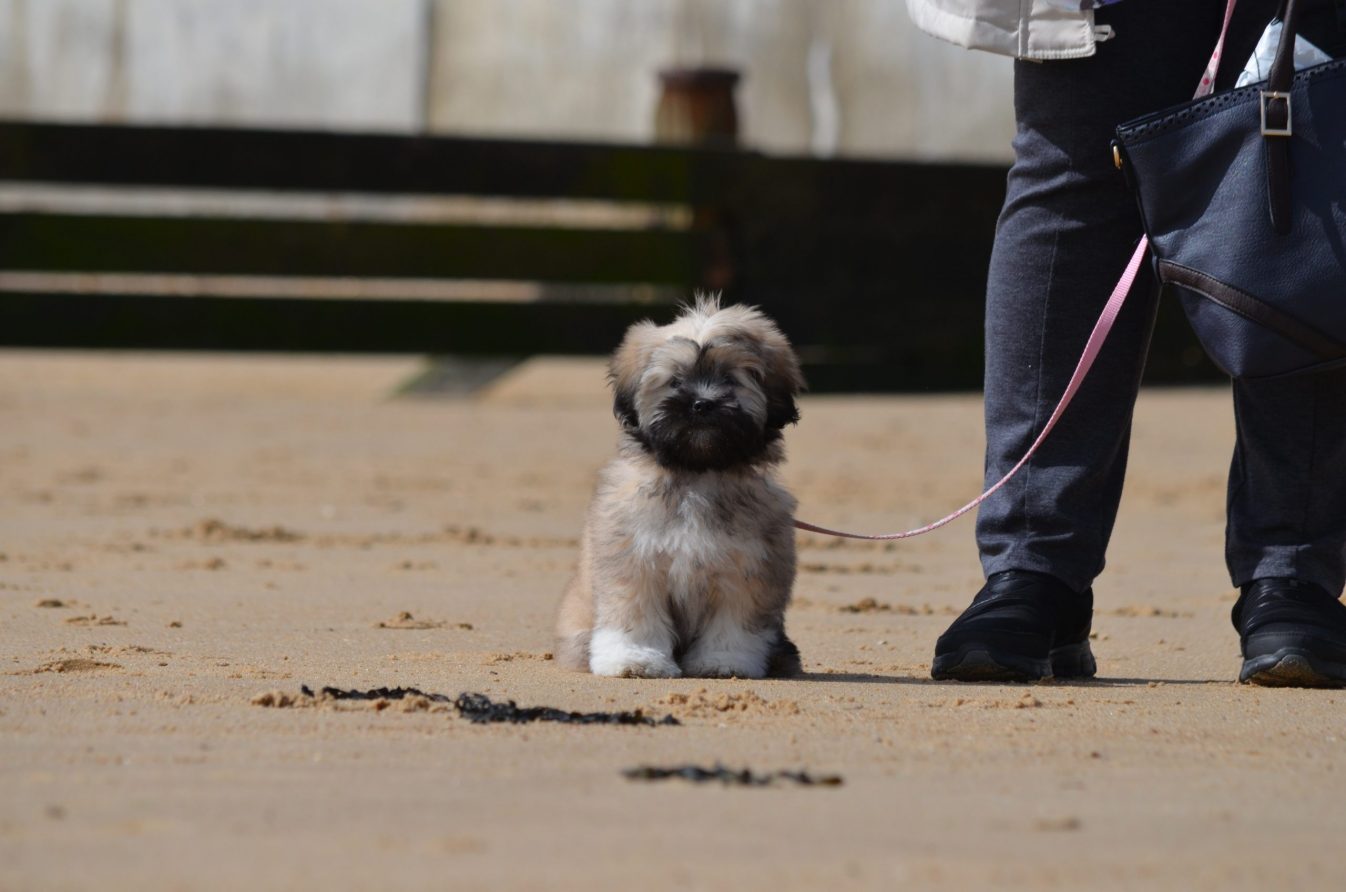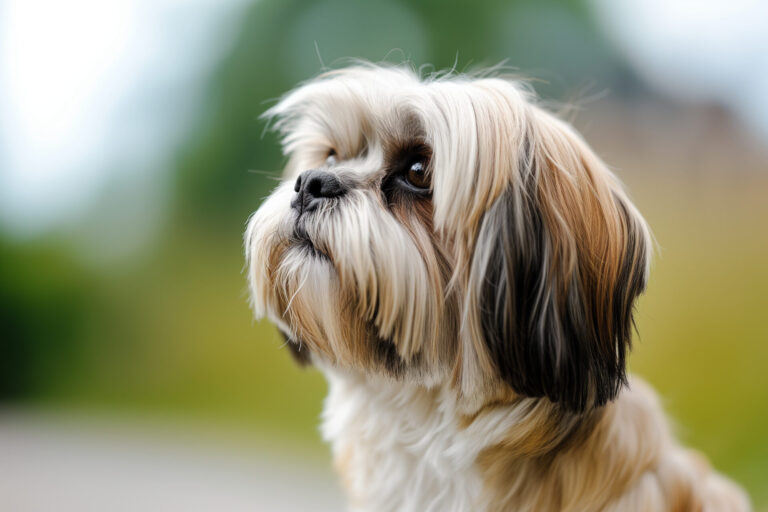Lhasa Apso of the Tibetan mountains
Lhasa Apsos are “one of a breed of small terriers having a long, heavy coat, raised in Tibet as watchdogs.” The Lhasa part of their name derives from the sacred city of Lhasa. It’s the capital of the Tibetan region in China and home to the Dalai Lamas. The Apso part of the name translates to “bearded”. The Lhasa Apso’s main duty was to keep watch of temples and Buddhist monasteries for intrusions. The breed has a very acute sense of hearing and a piercing bark that would have alerted the Buddhist monks of any threats. This explains why Lhasa Apsos are so suspicious of strangers and can easily distinguish friend from foe.
The Lucky Lhasa
Although the exact origins of this breed are not well known, these monastery dogs were a permanent fixture in many temples around Tibet. They were held in very high esteem by the Dalai Lamas and became valued as a good luck talisman, protecting the home from evil influences. The Buddhist monks exclusively bred Lhasa Apsos and trained them to be their highly valued watch dogs. These were dogs that were only available to nobility and could not be widely purchased. This kept the breed confined to the sacred city of Lhasa and surrounding villages, with villagers fiercely protecting the breed from outside influence. If you’re wondering why your Lhasa Apso has such a superior look about him, it’s because his early ancestors were very highly regarded!
Little lion dog
When fully grown with a coat of thick fluffy hair, a Lhasa Apso resembles a miniature version of a Lion. They’re known as the “little lion dog”. This name comes from the fluffy coat, its defensive square stance and their terrific fur colours. The lion nickname doesn’t just come from their remarkable fluffy exterior. The name “little lion dog” also derives from their resolute and regal personality. When a Lhasa looks in the mirror with that regal, authoritative stance, they’re seeing a mighty Lion in the reflection.
Moving westward
Between the 1600s and the early 1900s their popularity grew steadily. Travelers and foreign visitors began to take the dogs to countries around the world hence spreading the breed to new continents. The exclusivity that Tibetan monasteries had once enjoyed had ended whilst people from across the globe could experience this curious breed of dog.
Arriving in Britain
It wasn’t until 1854 that the first Lhasa arrived in Britain. The breed had its first appearance at Crufts Dog Show in 1935. Unfortunately, what followed was World War II, which decimated dog populations in Britain. The British government sanctioned the mass culling of pets due to a concern about the lack of food for them. The Lhasa was a lesser known breed, so every effort was made to help the breed survive the war. By the 1950s the population of Lhasas in the UK had risen gradually. By 2015 the Lhasa Apso was the 18th most registered dog with UK Kennel Club and popular in many areas of Britain. This number is in decline. The number of registrations last year has more than halved compared with 2008.
The perfect companion
Although they had roots in the Tibetan mountains they’re now a fixture in living rooms across Britain. Lhasa Apsos maintain their dedication to the serious business of watchdog duties. They are careful with strangers and will want to suss them out before making any new friends. Instinct will make them choose a vantage point in the house where they can keep an eye on everything. They think the universe revolves around them. They’re stubborn and aloof. They’re high maintenance and require regular grooming. But if you’re lucky enough to be a friend of a Lhasa Apso, you’ll be showered with love, loyalty, and affection. They’ll protect you at all costs. The perfect companion.




Two Lhasa Apso “Pros” I find endearing, but seldom mentioned, are:
1. Discovering they can be kept in the “Puppy Cut” convinced me to obtain my first Lhasa Apso. Unless you wish to show your Lhasa apso, the shorter “Puppy Cut” is so much easier to maintain. I only needed to have my two pups professionally groomed every five to six weeks. The Puppy Cut is adorable for pups and adult dogs; and so time saving compared to the longer “Show” version which required daily brushing and combing, and pricey bi-weekly grooming.
2: The Lhasa Apso has a very hearty bark, which has been known to scare off visitors and, even, intruders … who are amazed to find this little dog with the loud voice (bark) and larger attitude behind that closed door. I’ve had more than one visitor tell me it sounded like I had a large killer dog “guarding” my home behind my front door…. only to be introduced to my pint size Lhasa. I’m amused every time.